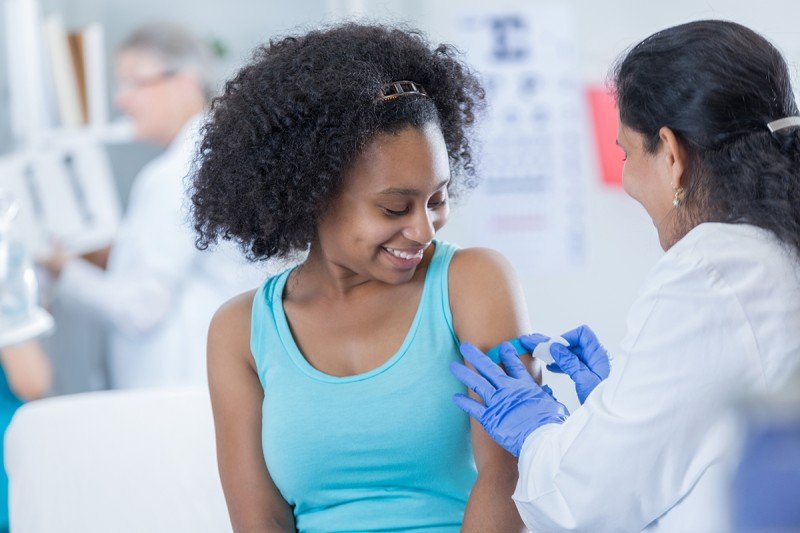
Update: On October 5, 2018, the US Food and Drug Administration announced that it had expanded the approved use of the Gardasil 9 vaccine to include women and men aged 27 through 45 years. “Today’s approval represents an important opportunity to help prevent HPV-related diseases and cancers in a broader age range,” said Peter Marks, director of the FDA’s Center for Biologics Evaluation and Research, when making the announcement.
Original post: Cervical cancer was once considered one of the most serious cancers for women. But with the advent of the Pap smear and the human papillomavirus (HPV) vaccine, the disease can now be screened for and, in many cases, prevented. We spoke with Vance Broach, a gynecologic surgeon at Memorial Sloan Kettering who regularly cares for women with cervical cancer, to find out what’s important to know about prevention, diagnosis, and treatment.
HPV is the most common cause of cervical cancer.
HPV infection causes the majority of cervical cancers and accounts for approximately nine out of ten cases. It’s less well known how other rare types of cervical cancer are caused.
In an effort to prevent HPV infection, which causes cervical cancer, the US Food and Drug Administration approved the first HPV vaccine in 2006. Today, two HPV vaccines are approved: Gardasil® 9 and Cervarix®. The US Centers for Disease Control and Prevention recommends that girls receive the HPV vaccine before their 13th birthday to lower their risk of HPV infection and, in turn, their risk of cervical cancer. Boys should also receive the vaccine, both because they can transmit HPV and to prevent some cancers of the head and neck that are caused by HPV, says Dr. Broach.
Other important risk factors for cervical cancer include smoking and being infected with HIV. Women who smoke or are infected with HIV are likely to have a harder time fighting HPV infections, increasing their risk of cancers caused by HPV.
Cervical cancer may be prevented with appropriate screening.
While vaccination against HPV may prevent many cervical cancers, your doctor can perform screening tests for abnormal cells. If left untreated, these precancerous cells, also called dysplasia, may become cervical cancer. Regular Pap smears, along with HPV testing of the cervix, can allow your doctor to find precancerous cells or early cancers before they spread. If your doctor does find precancerous or cancerous changes, catching them early is ideal for treatment purposes, according to Dr. Broach. Read our cervical cancer screening guidelines.
Sometimes women with precancerous changes of the cervix or cervical cancer can have symptoms. These can include:
- abnormal bleeding that is longer or heavier than usual, occurs after sex, or occurs between periods
- pain during sex
- abnormal vaginal discharge
Any woman with symptoms like these should check with her doctor.
If you are diagnosed with cervical cancer, you have options to preserve your fertility and have children.
Depending on the stage of the disease, says Dr. Broach, treating cervical cancer can involve some combination of surgery, chemotherapy, and radiation. At MSK, our experts work together to come up with the best treatment plan for each individual.
For women who want to be able to have children, our surgeons can do a procedure developed and perfected at MSK that preserves their fertility. It is called a radical trachelectomy. In this operation, the cervix and surrounding tissue are removed, but the uterus is not. This is different from a hysterectomy. That’s when the entire uterus is removed along with the cervix.
Experts from our Cancer and Fertility Program guide women through other options as well. These include egg and embryo freezing and ovarian transposition. Such choices may allow women to preserve their fertility before treatment begins so that they can build a family after treatment ends.










